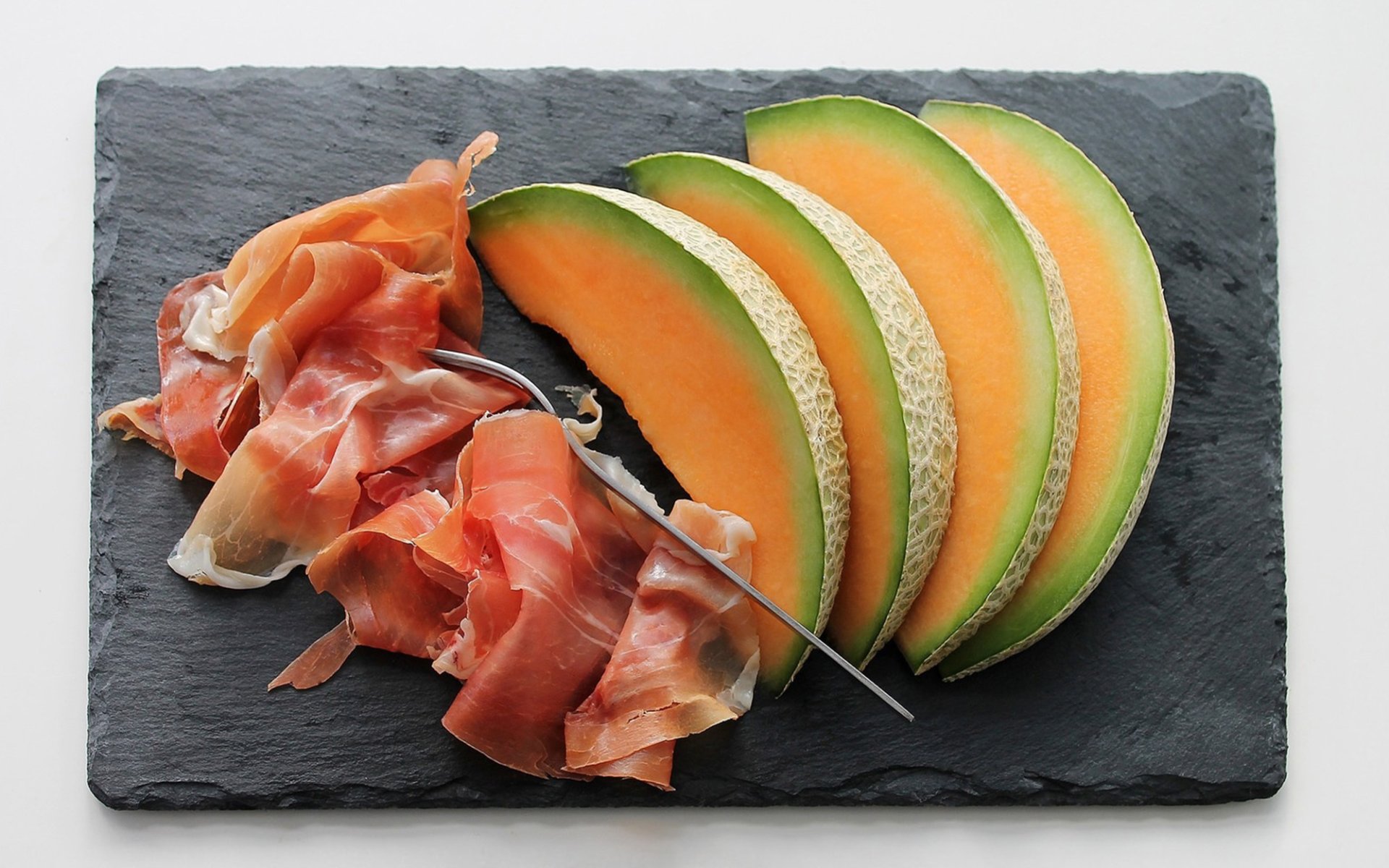Ham & Melon

The combination of ham and melon is a culinary creation that has delighted palates worldwide for centuries. With the rich, savory taste of ham perfectly complemented by the sweet, juicy flavor of melon, this pairing has become a Perfect Pairing that has captured the hearts of many, symbolizing refined Italian simplicity.
Ancient Origins: From Ancient Civilizations to the Mediterranean
The history of ham and melon dates back to ancient civilizations. Meat preservation processes, such as drying and curing with salt, have existed since the nomadic hunter-gatherer era, serving as crucial methods for food storage. Melon also boasts an ancient history, having been cultivated in ancient Egypt and Persia for over 2,000 years before spreading across Asia and Europe along trade routes. This widespread availability made both ingredients common in many regions.
The pairing of ham and melon is believed to have originated in the Mediterranean region, where both ingredients were readily available. The first written record dates back to ancient Rome, where this culinary duo was said to be favored among the upper classes, demonstrating that even a seemingly simple dish has a long history of being appreciated by elite society.
The Renaissance Era: Elevation to High Cuisine
During the European Renaissance, the concept of pairing ham and melon gained further popularity, especially in Italy. Italian chefs, with their passion for food, began introducing this ham and melon pairing to the luxurious tables of the aristocracy. This concept quickly spread across Europe, becoming a symbol of culinary refinement and sophistication, reflecting a harmonious blend of taste and artistry.
Italian cuisine played a significant role in elevating the ham and melon pairing. Italy is renowned for its exquisite hams, such as Prosciutto di Parma from Parma and Prosciutto di San Daniele from San Daniele del Friuli, both meticulously cured and possessing unique flavors. Italian chefs paired these premium hams with fresh melon, instantly transforming this simple dish into a valued delicacy sought after by the elite.
Global Spread and Evolution: Diverse Cultures, Diverse Flavors
Over time, ham and melon could be found in numerous restaurants worldwide. The classic combination still features Prosciutto, Italian ham, and sweet, juicy melon with its beautiful orange hue. However, various countries have developed their own versions to reflect local ingredients and preferences:
In Spain, Jamón Serrano or Jamón Ibérico is commonly paired with Piel de Sapo melon, which has a skin resembling a toad's but boasts a sweet, juicy flesh.
In France, Jambon de Bayonne, a ham from Bayonne in southwestern France, is often paired with the fragrant and particularly sweet Charentais melon.
As European settlers ventured into the New World, they brought their culinary traditions with them to the Americas, leading to exciting new evolutions of ham and melon. Particularly in the American South, ham and melon were innovatively combined into popular dishes like ham and melon salad, which became a highly favored refreshing summer meal.
The Secret to Delight: A Balance of Flavors
The pairing of ham and melon creates a perfectly balanced combination. Typically, ham is salty to intensely salty. Italians ingeniously paired melon with ham to temper the ham's strong saltiness with the melon's sweetness, creating a harmonious balance of sweet, rich, and salty flavors. Because melon is a sweet and succulent fruit, it also acts as a "palate cleanser," refreshing the taste buds and preparing them for the next bite without feeling overwhelmed or overly salty.
Today, ham and melon continue to be a balanced pairing that stimulates the senses and inspires culinary creativity. Whether served elegantly on a plate in a luxurious Italian restaurant, skewered for a summer barbecue, or incorporated into an American-style salad, ham and melon remains a beloved pairing that continues to captivate people worldwide. It is a testament to how perfect simplicity can create endless culinary joy.


